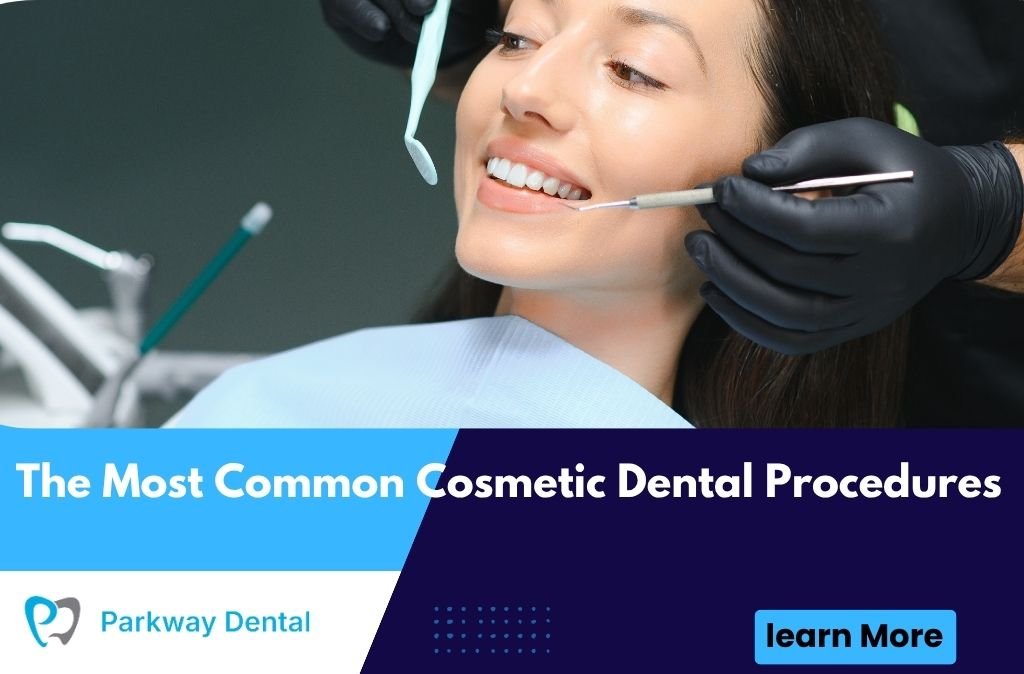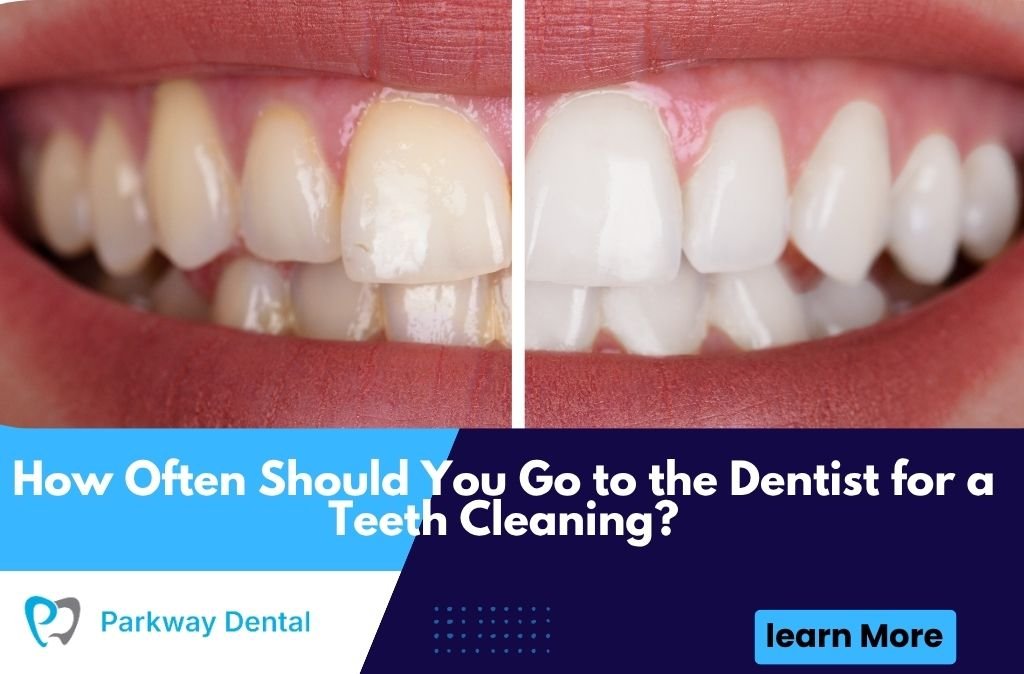A beautiful smile is more than just aesthetics — it boosts confidence, enhances first impressions, and improves overall well-being. Cosmetic dentistry combines art and science to transform your teeth, correct imperfections, and create the smile you’ve always wanted. Whether you’re looking to brighten discolored teeth, close gaps, or restore chipped enamel, modern treatments make it possible with precision and comfort. This guide explores the most common cosmetic dental procedures and how they can help you achieve a flawless, natural-looking smile.
Understanding Cosmetic Dentistry
Cosmetic dentistry focuses on improving the appearance of your teeth, gums, and bite. Unlike general dentistry, which treats oral diseases, cosmetic treatments enhance the look of your smile while maintaining oral function. From minor touch-ups to full smile makeovers, these procedures use advanced materials and digital imaging to deliver natural, lasting results. Whether it’s teeth whitening, veneers, or dental implants, cosmetic dentistry offers customized options for every need and budget.
Why People Choose Cosmetic Dentistry
People turn to cosmetic dentistry for various reasons — to repair damage, correct misalignment, or simply feel more confident about their smile. A radiant smile enhances both personal and professional relationships. With today’s technology, treatments are quicker, more comfortable, and more affordable than ever. Many patients choose cosmetic dental procedures to reverse years of wear, discoloration, or unevenness, revealing a youthful and polished appearance that boosts self-esteem and oral health.
Teeth Whitening: Brightening Your Smile Instantly
Teeth whitening remains the most popular and accessible cosmetic dental procedure worldwide. Over time, teeth naturally darken due to age, diet, and lifestyle habits like coffee or tobacco use. Professional whitening treatments can safely and effectively remove stains, restoring your teeth’s brightness. In-office whitening offers fast results within one visit, while take-home kits provide gradual improvement under your dentist’s supervision for lasting results.
Types of Teeth Whitening Treatments
There are two main categories: in-office teeth whitening and at-home whitening kits. In-office treatments use stronger bleaching agents like hydrogen peroxide, producing dramatic results in just an hour. At-home kits, provided by your dentist, include custom trays and lower-concentration gels for gradual whitening. Both methods are more effective and safer than over-the-counter products, reducing sensitivity and protecting enamel.
Benefits of Professional Teeth Whitening
Professional teeth whitening delivers faster, longer-lasting results compared to store-bought options. The procedure removes deep stains caused by food, drinks, or aging without damaging your enamel. Dentists monitor your progress to prevent irritation and tailor the treatment to your goals. Regular touch-ups can keep your smile radiant for years. Whitening also helps restore self-confidence and rejuvenate your overall appearance.
Dental Veneers: The Secret to a Perfect Smile
Dental veneers are ultra-thin porcelain or composite shells bonded to the front of your teeth. They instantly correct imperfections like discoloration, chips, gaps, or minor misalignments. Veneers are custom-designed to match your facial structure and tooth color, providing a seamless, natural look. With proper care, veneers can last 10–15 years, offering a durable and beautiful transformation for your smile.
Types of Veneers: Porcelain vs. Composite
Porcelain veneers are durable, stain-resistant, and mimic the light-reflecting properties of natural teeth. They’re ideal for long-term results and require minimal maintenance. Composite veneers, made of resin material, are more affordable and can often be completed in one visit. Though less durable than porcelain, they’re easily repairable and ideal for minor aesthetic corrections. Your dentist will recommend the best type based on your goals and budget.
Benefits of Dental Veneers
Veneers provide a complete smile makeover by addressing multiple flaws at once. They improve shape, color, alignment, and size with a single treatment. Unlike whitening or bonding, veneers resist staining from coffee, tea, or wine. They also strengthen weakened enamel and enhance symmetry, giving you a balanced, confident smile. The result is a flawless, camera-ready appearance that looks completely natural.
Dental Bonding: Quick Fix for Chips and Gaps
Dental bonding is a fast, affordable, and minimally invasive way to repair minor imperfections. Using tooth-colored composite resin, your dentist can reshape chipped, cracked, or discolored teeth in one visit. Bonding is ideal for small repairs or closing gaps between teeth. It’s painless, doesn’t require anesthesia, and can last up to 10 years with good oral hygiene.
The Dental Bonding Procedure
During cosmetic dental bonding, your dentist applies a resin material to the affected tooth, shapes it for a natural look, and hardens it with a special curing light. The process takes about 30–60 minutes per tooth. It’s perfect for quick improvements without the cost or permanence of veneers or crowns. Bonding is also reversible, making it an excellent first step toward a smile transformation.
Advantages of Dental Bonding
Tooth bonding offers instant results at a fraction of the cost of other cosmetic procedures. It can repair chips, hide discoloration, and correct minor alignment issues without significant enamel removal. Bonding is versatile and effective for both functional and aesthetic enhancements. With minimal prep time, it’s a great option for those seeking an immediate confidence boost.
Invisalign: Straightening Teeth Discreetly
Invisalign revolutionized orthodontics by offering a clear, comfortable alternative to traditional braces. These removable aligners gradually shift your teeth into place without metal wires or brackets. Each set is custom-made using 3D digital scans for a precise fit. Invisalign is ideal for correcting mild to moderate misalignments, crowding, and spacing issues while maintaining your natural appearance.
How Invisalign Works
The Invisalign system uses a series of custom aligners that you wear for about 20–22 hours daily. Every two weeks, you switch to a new set that gently moves your teeth into their ideal position. The treatment typically takes 6–18 months, depending on complexity. Because aligners are removable, you can eat, brush, and floss normally, making them a convenient option for busy lifestyles.
Benefits of Invisalign Treatment
Invisalign aligners are virtually invisible, comfortable, and easy to maintain. Unlike braces, they don’t irritate gums or trap food particles. The aligners can be removed for meals and special occasions, allowing for better oral hygiene. Regular progress checks with your cosmetic dentist ensure that results are consistent and precise. It’s an ideal choice for professionals and adults seeking a subtle, effective alignment solution.
Dental Implants: Permanent Solution for Missing Teeth
Dental implants are the gold standard for replacing missing teeth. They involve a titanium post surgically placed into the jawbone, acting as a natural tooth root. Once healed, a custom crown is attached, restoring both function and aesthetics. Implants look, feel, and perform just like natural teeth, preventing bone loss and preserving your facial structure.
The Dental Implant Procedure
The process of dental implant placement typically occurs in three stages: implant insertion, healing (osseointegration), and crown placement. After the titanium post fuses with the bone, your dentist attaches an abutment and custom-made crown. The entire process can take several months but results in a durable, lifelong restoration. Implants are ideal for patients with one or more missing teeth who desire a permanent solution.
Advantages of Dental Implants
Dental implants offer unmatched stability, comfort, and longevity compared to dentures or bridges. They prevent jawbone deterioration, improve speech, and allow you to eat without restrictions. Because they integrate with the bone, implants maintain your facial shape and prevent neighboring teeth from shifting. With proper care, implants can last a lifetime, making them a wise long-term investment in your oral health.
Dental Crowns: Restoring Function and Beauty
Dental crowns are tooth-shaped caps that cover damaged or weakened teeth to restore their strength, shape, and appearance. They’re often used after root canal treatments, large fillings, or trauma. Crowns can also improve the look of discolored or misshapen teeth. Modern crowns are crafted from durable materials like porcelain, ceramic, or zirconia for a natural and long-lasting finish.
When You Might Need a Dental Crown
A dental crown may be necessary when a tooth is too damaged for a filling or bonding. It protects the remaining structure, preventing further decay or fracture. Crowns are also used for cosmetic purposes to cover severely discolored teeth or complete smile makeovers. They blend seamlessly with your natural teeth for a uniform, attractive appearance.
Benefits of Dental Crowns
Crowns not only restore function but also enhance aesthetics. They strengthen weakened teeth, improve alignment, and correct uneven shapes or sizes. With proper care, crowns can last 10–15 years or more. They’re ideal for anyone seeking both durability and beauty in their smile restoration.
Gum Contouring: Balancing the Gum Line
Gum contouring reshapes uneven or excessive gum tissue to improve smile symmetry. People with a “gummy smile” or irregular gum line can benefit from this cosmetic procedure. Using laser or surgical techniques, dentists sculpt the gums for a balanced appearance. The treatment is quick, minimally invasive, and provides immediate visual improvement.
Benefits of Gum Contouring
Gum reshaping enhances smile aesthetics by exposing more of your natural tooth structure. It creates harmony between teeth and gums, making your smile look proportionate. The procedure also eliminates pockets where bacteria can accumulate, improving gum health. Healing is fast, and results are permanent with proper care and hygiene.
Composite Fillings: Aesthetic and Functional Repair
Composite fillings, also known as tooth-colored fillings, are used to restore decayed or damaged teeth while blending perfectly with your natural enamel. Made of resin and glass, they’re a more aesthetic alternative to traditional silver fillings. Dentists use them to repair cavities, reshape teeth, and even close small gaps.
Benefits of Composite Fillings
Tooth-colored fillings restore strength and beauty simultaneously. They bond directly to the tooth, providing better support than metal fillings. The natural appearance makes them ideal for visible areas like front teeth. Composite fillings are durable, mercury-free, and help preserve more of the original tooth structure during placement.
Smile Makeover: Comprehensive Transformation
A smile makeover combines multiple cosmetic treatments tailored to your needs. Whether you want whiter teeth, better alignment, or complete restoration, your dentist creates a customized plan. Procedures may include whitening, veneers, crowns, or orthodontics. The goal is to enhance aesthetics while ensuring balance and harmony between facial features and dental structure.
Benefits of a Smile Makeover
A smile makeover improves more than just appearance — it enhances confidence and quality of life. Combining treatments allows for dramatic yet natural-looking results. Digital imaging helps visualize outcomes before starting, ensuring you achieve the smile you envision. Many patients report not only better self-esteem but also improved oral health habits after their transformation.
Choosing the Right Cosmetic Dentist
Selecting the right cosmetic dentist is key to achieving your dream smile. Look for someone with experience, advanced training, and modern technology like digital imaging and laser dentistry. Check patient reviews, before-and-after photos, and credentials. A trusted professional ensures that procedures are safe, effective, and customized to your needs and preferences.
What to Expect During a Cosmetic Consultation
During a cosmetic dentistry consultation, your dentist will evaluate your oral health, discuss your goals, and create a personalized treatment plan. You’ll explore options based on your budget, timeline, and aesthetic preferences. Digital simulations may show how your new smile will look before any treatment begins, ensuring confidence in your decision.
Conclusion
Cosmetic dentistry offers countless ways to enhance your smile and boost your self-confidence. From quick fixes like teeth whitening and bonding to transformative treatments like veneers, implants, and smile makeovers — modern dental care combines artistry with precision for stunning results. A beautiful smile doesn’t just change how you look — it transforms how you feel. For expert, compassionate care and a smile you’ll love to share, visit a trusted Dentist in West Roxbury, MA for your personalized cosmetic consultation.
FAQs
What is the most popular cosmetic dental procedure?
Teeth whitening remains the most popular because it’s affordable, fast, and delivers instant results with minimal discomfort.
How long do veneers last?
High-quality porcelain veneers can last 10–15 years or longer with proper care and routine dental visits.
Is cosmetic dentistry painful?
Most procedures are minimally invasive and performed under local anesthesia, ensuring a comfortable experience with little to no pain.
What’s the difference between bonding and veneers?
Dental bonding repairs small imperfections quickly, while veneers provide long-term solutions for multiple cosmetic issues like color, shape, and alignment.
Can I straighten my teeth without braces?
Yes. Invisalign clear aligners offer a discreet, removable alternative for mild to moderate misalignment.
How much does a smile makeover cost?
The cost varies depending on procedures included. Simple whitening may cost a few hundred dollars, while full smile makeovers can reach several thousand.
Are dental implants permanent?
Yes. Dental implants fuse with your jawbone, providing a permanent, natural-looking solution for missing teeth with proper care.
How can I maintain my cosmetic dental results?
Practice good oral hygiene, limit staining foods, avoid smoking, and schedule regular cleanings every six months.
Does insurance cover cosmetic dentistry?
Most cosmetic treatments are elective and not covered, but some procedures like crowns or implants may be partially reimbursed if medically necessary.
Who is a good candidate for cosmetic dentistry?
Anyone with healthy gums and teeth who wants to improve the appearance of their smile can benefit from cosmetic dental procedures.





